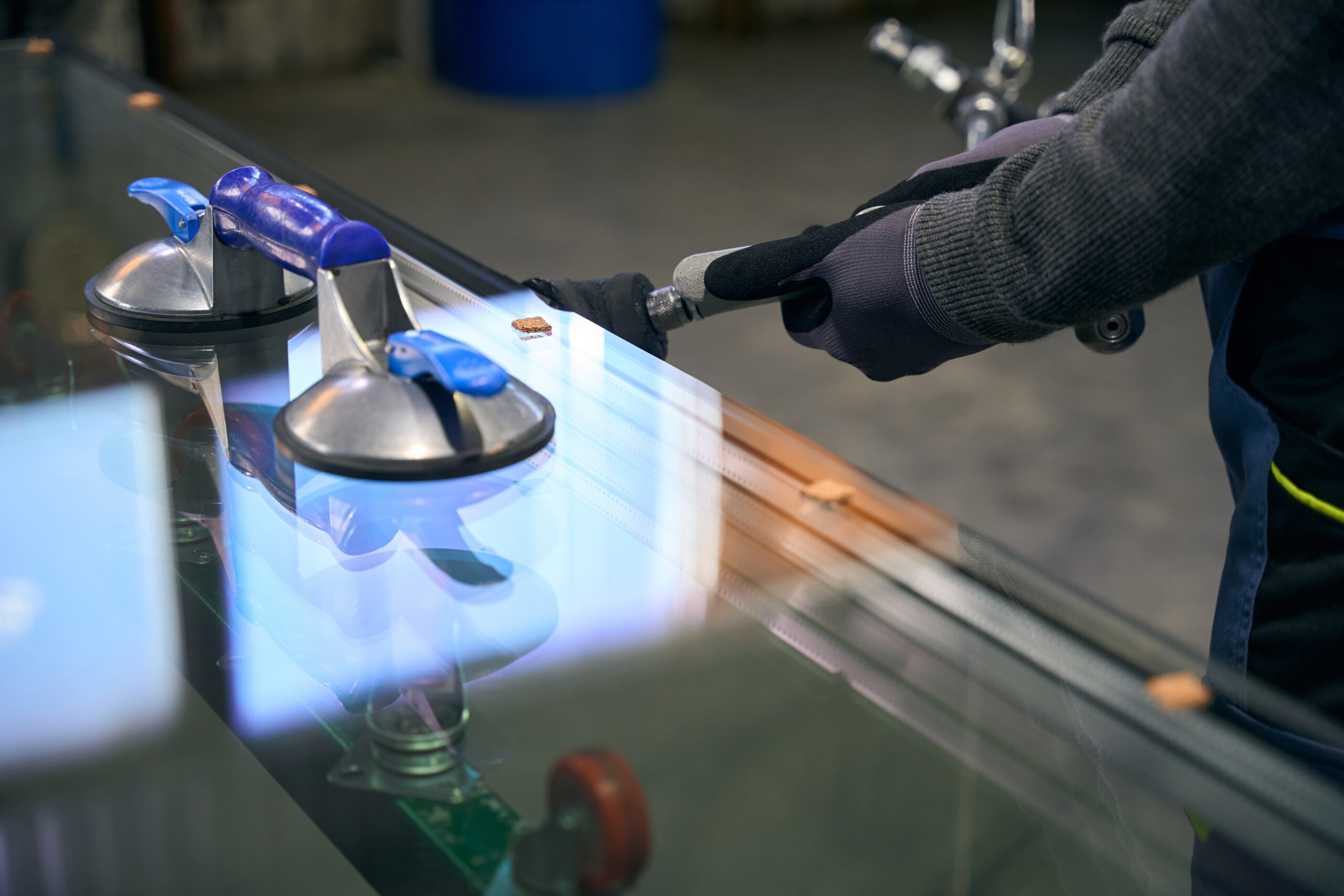Tempering of glass
Tempered glass can spontaneously burst (explode) without any external fault – this is a normal phenomenon.
Tempered glass is heat-treated ordinary glass which, after the tempering process, acquires a new internal stress distribution.
After heating to a temperature of around 600 °C and subsequent rapid cooling with an air shower, the inner part remains warm as the surface undergoes rapid cooling.
After this quenching-hardening process, tensile stresses remain inside the glass, while compressive stresses build up on the surface.
Safety toughened glass is used wherever there are high demands on safety.
When it breaks, a large number of small unsharpened parts are formed, the risk of injury is reduced to a minimum.
Tempered ESG glass can also be used to produce laminated glass and, of course, special insulating and facade panels.
Heat Soak is a process in which the finished ESG glass is subjected to a test called Heat Soak.
Artificial ageing.
In this process, the finished glass is subjected to a heat load at 290 °C for up to 8 hours.
This process is prescribed for facades etc.
A report is always drawn up on the performance of the test.
This test eliminates more than 99% of the cases of spontaneous cracking (explosion) of ESG and TVG glass.
The most common use of tempered glass
- all-glass partition walls, including door systems,
- shower enclosures,
- car side windows,
- railings,
- special windows,
- glass borders,
- glazed public transport stops.
Glass parameters
- glass thickness: 4 – 12 mm,
- maximum dimension: 4200×2400 mm (depending on glass thickness),
- minimum size: 250×300 mm.


